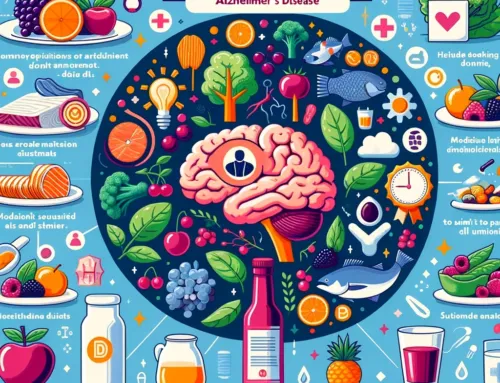
FAQ: How Can You Effectively Manage Diabetes Through Diet, Exercise, and Lifestyle Adjustments?
FAQ
Approx read time: 60.8 min.
How Can You Effectively Manage Diabetes Through Diet, Exercise, and Lifestyle Adjustments? How Can You Effectively Manage Diabetes Through Diet, Exercise, and Lifestyle Adjustments?. Managing diabetes, whether type 1 or type 2, involves a comprehensive approach that includes diet, exercise, monitoring your blood sugar levels, and, often, medication. Here’s an overview of what you need to know for both types of diabetes, with a focus on dietary considerations:
Understanding Diabetes
- Type 1 Diabetes: This is an autoimmune condition where the body’s immune system attacks and destroys insulin-producing cells in the pancreas. People with type 1 diabetes require lifelong insulin therapy.
- Type 1 diabetes is a chronic condition that occurs when the body’s immune system mistakenly attacks and destroys the beta cells in the pancreas that produce insulin. Insulin is a hormone that allows glucose (sugar) in the blood to enter cells, where it’s used for energy. Without sufficient insulin, glucose builds up in the bloodstream, leading to high blood sugar levels, which can cause a range of health issues over time.
Causes and Risk Factors
The exact cause of type 1 diabetes is unknown, but it’s believed to involve a combination of genetic susceptibility and environmental factors. These environmental triggers might include viruses, diet, or other factors, although no single cause has been identified. Unlike type 2 diabetes, type 1 diabetes is not directly related to lifestyle factors such as diet and exercise.
Symptoms
Symptoms of type 1 diabetes can develop quickly, over a few days to weeks, and may include:
- Increased thirst and frequent urination
- Extreme hunger
- Unintended weight loss
- Fatigue and weakness
- Blurred vision
- In females, a vaginal yeast infection
If left untreated, type 1 diabetes can lead to serious health complications, including diabetic ketoacidosis (DKA), which is a medical emergency.
Diagnosis
Type 1 diabetes is usually diagnosed through several blood tests:
- Glycated hemoglobin (A1C) test
- Random blood sugar test
- Fasting blood sugar test
- Autoantibodies test (to distinguish between type 1 and type 2 diabetes)
Management and Treatment
There is currently no cure for type 1 diabetes, and management focuses on maintaining blood sugar levels within a target range to prevent complications. Key components of management include:
- Insulin Therapy: Since the body cannot produce insulin, all people with type 1 diabetes require insulin therapy. This can be delivered through injections or an insulin pump. The type and dosage of insulin are tailored to each individual’s needs.
- Blood Sugar Monitoring: Regular monitoring of blood sugar levels is essential. Continuous glucose monitoring (CGM) devices are becoming more common and provide real-time data on blood sugar levels.
- Diet and Exercise: While diet and exercise don’t cause type 1 diabetes, they are vital parts of managing the condition. A balanced diet and regular physical activity can help control blood sugar levels and reduce the risk of complications.
- Education: Understanding the condition, including how to administer insulin, monitor blood sugar levels, and recognize the signs of too high or too low blood sugar, is crucial for individuals with type 1 diabetes.
Research and Future Directions
Research into type 1 diabetes is ongoing, with efforts focused on understanding the causes, preventing the condition, and finding new treatment methods. Areas of research include islet cell transplantation, the development of an artificial pancreas system, and immunotherapy to stop or slow the autoimmune attack on pancreatic beta cells.
Living with type 1 diabetes requires careful and constant management of one’s health, but with the right treatment and lifestyle adjustments, individuals can lead full and active lives. Advances in technology and medicine continue to improve the quality of life for those with type 1 diabetes and offer hope for future breakthroughs in treatment.
- Type 1 diabetes is a chronic condition that occurs when the body’s immune system mistakenly attacks and destroys the beta cells in the pancreas that produce insulin. Insulin is a hormone that allows glucose (sugar) in the blood to enter cells, where it’s used for energy. Without sufficient insulin, glucose builds up in the bloodstream, leading to high blood sugar levels, which can cause a range of health issues over time.
- Type 2 Diabetes: This form of diabetes is characterized by insulin resistance, where the body’s cells do not respond properly to insulin, and/or the pancreas does not produce enough insulin. It can often be managed or mitigated with lifestyle changes and medication.
- Type 2 diabetes is the most common form of diabetes, affecting millions of people worldwide. It develops when the body becomes resistant to insulin or when the pancreas is unable to produce enough insulin. As a result, glucose builds up in the bloodstream instead of being used as energy by the cells, leading to high blood sugar levels. Unlike type 1 diabetes, which is primarily an autoimmune disease, type 2 diabetes is closely linked to lifestyle factors, although genetics also play a significant role.
Causes and Risk Factors
Several factors can increase the risk of developing type 2 diabetes, including:
- Obesity and being overweight: Excess fat, particularly when it is concentrated around the abdomen, can increase insulin resistance.
- Physical inactivity: Regular physical activity helps control weight, uses up glucose as energy, and makes cells more sensitive to insulin.
- Genetics: A family history of type 2 diabetes increases the risk.
- Age: The risk increases with age, especially after 45 years, although it’s becoming more common in younger people due to rising obesity rates.
- Ethnicity: Certain ethnic groups, including African Americans, Hispanic Americans, Native Americans, and Asian Americans, are at a higher risk.
- Gestational diabetes: Women who have had diabetes during pregnancy or have given birth to a baby weighing more than 9 pounds are at increased risk.
- Polycystic ovary syndrome (PCOS): Women with PCOS are at a higher risk.
Symptoms
The symptoms of type 2 diabetes develop more gradually than those of type 1 diabetes and may include:
- Increased thirst and frequent urination
- Increased hunger
- Weight loss, despite eating more (in some cases)
- Fatigue
- Blurred vision
- Slow healing of wounds
- Frequent infections
- Areas of darkened skin, particularly in the neck and armpits
Diagnosis
Type 2 diabetes is diagnosed using several blood tests:
- A1C test: Measures average blood sugar level over the past 2 to 3 months.
- Fasting blood sugar test: Measures blood sugar after an overnight fast.
- Oral glucose tolerance test (OGTT): Measures blood sugar before and after drinking a sugary drink.
Management and Treatment
Management of type 2 diabetes focuses on lowering blood sugar levels to a normal range. Treatment can include:
- Lifestyle Changes: Diet and exercise are the cornerstones of managing type 2 diabetes. A healthy diet, regular physical activity, and maintaining a healthy weight can significantly improve blood sugar control and may reduce the need for medication.
- Medication: When lifestyle changes are insufficient to control blood sugar levels, medications may be prescribed. There are various types of medications that work in different ways to lower blood sugar levels.
- Monitoring: Regular monitoring of blood sugar levels helps to ensure that they remain within the target range.
- Education: Understanding the condition and how to manage it, including diet, exercise, and the proper use of medications, is essential.
Prevention
Many cases of type 2 diabetes can be prevented or delayed by:
- Maintaining a healthy weight
- Engaging in regular physical activity
- Eating a balanced, healthy diet rich in fruits, vegetables, and whole grains
- Avoiding tobacco use
- Limiting alcohol consumption
Outlook
While type 2 diabetes is a chronic condition that requires lifelong management, individuals can live long and healthy lives with proper treatment and lifestyle adjustments. Ongoing research continues to seek better ways to prevent, manage, and treat type 2 diabetes, including new medications, lifestyle modification programs, and potential surgical options for obesity management.
- Type 2 diabetes is the most common form of diabetes, affecting millions of people worldwide. It develops when the body becomes resistant to insulin or when the pancreas is unable to produce enough insulin. As a result, glucose builds up in the bloodstream instead of being used as energy by the cells, leading to high blood sugar levels. Unlike type 1 diabetes, which is primarily an autoimmune disease, type 2 diabetes is closely linked to lifestyle factors, although genetics also play a significant role.
General Dietary Guidelines – How Can You Effectively Manage Diabetes Through Diet, Exercise, and Lifestyle Adjustments?
The dietary approach for managing both types of diabetes focuses on controlling blood sugar levels and maintaining a healthy weight. Here are some general guidelines:
- Carbohydrate Counting and Glycemic Index (GI):
- Monitor your carb intake since carbs affect your blood sugar more than other nutrients. Focus on complex carbohydrates (like whole grains, fruits, and vegetables) that are high in fiber.
- Choose low to medium GI foods more often as they cause a slower, more gradual rise in blood sugar levels.
- Healthy Fats:
- Incorporate sources of unsaturated fats (like avocados, nuts, and olive oil) into your diet, which can help reduce cholesterol levels and support heart health.
- Lean Protein:
- Include lean protein sources (like chicken, fish, tofu, and legumes) to help with satiety and muscle maintenance.
- Portion Control:
- Pay attention to portion sizes to help manage calorie intake and control blood sugar levels.
- Regular Meals:
- Eat regular meals and snacks to keep your blood sugar levels stable throughout the day.
- Limit Added Sugars and Refined Carbs:
- Reduce intake of added sugars and refined carbohydrates, such as those found in sugary beverages, desserts, and white bread.
- Stay Hydrated:
- Drink plenty of water throughout the day, and limit sugary drinks and alcohol.
- Managing diabetes through diet is a crucial aspect of controlling blood sugar levels and maintaining overall health. The general dietary guidelines for managing both type 1 and type 2 diabetes share common goals: to stabilize blood sugar levels, manage weight, and reduce the risk of diabetes-related complications. Here’s a deeper look into these guidelines:
1. Carbohydrate Management
- Counting Carbohydrates: Carbs have the most significant impact on blood sugar levels. Learning how to count carbohydrates can help you manage your blood sugar. This involves tracking the grams of carbohydrates consumed at each meal.
- Glycemic Index (GI): Choosing foods based on the glycemic index can also aid in blood sugar management. Foods with a low or medium GI value are better for blood sugar control as they are digested more slowly, causing a slower rise in blood sugar levels.
2. Fiber Intake
- High-Fiber Foods: Consuming high-fiber foods can improve blood sugar control. Fiber slows carb digestion and sugar absorption. Aim for at least 25 to 30 grams of fiber per day from vegetables, fruits, whole grains, and legumes.
3. Healthy Fats
- Unsaturated Fats: Incorporate healthy, unsaturated fats into your diet, which can help lower cholesterol levels and reduce heart disease risk, a concern for people with diabetes. Sources include avocados, nuts, seeds, and olive oil.
4. Lean Protein
- Protein Choices: Eating lean protein sources at each meal can help maintain muscle mass and keep you feeling full longer. Options include poultry, fish, tofu, legumes, and low-fat dairy products.
5. Meal Regularity
- Consistent Meal Times: Eating at regular times helps prevent spikes in blood sugar. Consistency in meal timing and composition can also make it easier to manage medication and insulin therapy.
6. Portion Control
- Manage Portions: Being mindful of portion sizes can help control calorie intake and manage blood sugar levels, especially important for weight management.
7. Reduce Added Sugars and Refined Carbs
- Limit Sugary Foods: Foods and drinks high in added sugars can lead to blood sugar spikes. Limit or avoid sugary beverages, sweets, and snacks made with refined grains.
8. Hydration
- Water as Primary Beverage: Drink plenty of water throughout the day to stay hydrated and avoid sugary drinks, which can significantly impact blood sugar levels.
9. Alcohol Consumption
- Moderation and Monitoring: If you choose to drink alcohol, do so in moderation and with a meal to prevent low blood sugar levels. Be mindful of the carbohydrate content in alcoholic beverages.
10. Salt Intake
- Reduce Sodium: High blood pressure is more common in people with diabetes. Reducing sodium intake can help manage blood pressure. Aim for less than 2,300 mg of sodium per day, as recommended by the American Diabetes Association.
Personalization – How Can You Effectively Manage Diabetes Through Diet, Exercise, and Lifestyle Adjustments?
It’s important to tailor these guidelines to fit your personal health goals, lifestyle, and any specific dietary needs. Consulting with a registered dietitian or certified diabetes educator can provide personalized nutrition advice and help develop a meal plan that meets your individual requirements and preferences. This personalized approach ensures that you can enjoy a varied, balanced diet while managing your diabetes effectively.
Individual Needs
It’s important to remember that nutritional needs can vary significantly between individuals, especially between those with type 1 and type 2 diabetes. For example, individuals with type 1 diabetes need to carefully balance insulin doses with carbohydrate intake and physical activity levels. Those with type 2 diabetes may need to focus more on weight management and insulin resistance.
Consulting a Professional
- Endocrinologist: They can provide specialized care and adjustments to your diabetes management plan, including medication and insulin therapy.
- Dietitian or Certified Diabetes Educator (CDE): A professional can help tailor a meal plan to your individual needs, preferences, and lifestyle, ensuring you get balanced nutrition while managing your blood sugar levels.
- Consulting with healthcare professionals is a critical component of effective diabetes management. An endocrinologist and a dietitian or Certified Diabetes Educator (CDE) play pivotal roles in providing comprehensive care tailored to your specific needs. Here’s more detail on how each can contribute to your diabetes management plan:
Endocrinologist
An endocrinologist is a doctor who specializes in the endocrine system, the system that controls hormones. Hormones play a significant role in metabolism, respiration, growth, reproduction, sensory perception, and movement. Endocrinologists are especially skilled in managing diseases that affect these hormones, including diabetes, which involves insulin, a crucial hormone for regulating blood sugar levels.
How an Endocrinologist Can Help:
- Diagnosis and Monitoring: They can confirm your diabetes diagnosis and monitor the progression of your disease.
- Medication and Insulin Therapy: Endocrinologists are experts in prescribing and adjusting medications and insulin therapy to achieve optimal blood sugar control. They can guide you on the types of insulin and delivery methods (such as injections or insulin pumps) best suited to your lifestyle and diabetes management needs.
- Advanced Treatment Options: They stay informed about the latest diabetes research and treatment advancements, offering you access to cutting-edge care options.
- Complication Prevention: By closely monitoring your condition and treatment effectiveness, an endocrinologist can help prevent or manage diabetes-related complications, such as neuropathy, retinopathy, and cardiovascular disease.
Dietitian or Certified Diabetes Educator (CDE)
Dietitians and CDEs provide nutritional counseling and education to help you understand how food affects your blood sugar levels and overall health. They work closely with you to develop a personalized eating plan that fits your lifestyle, preferences, and nutritional needs.
How a Dietitian or CDE Can Help:
- Personalized Meal Planning: They help create a meal plan that considers your weight goals, preferences, allergies, and any other health conditions you might have, ensuring that you receive balanced nutrition while managing your blood sugar levels.
- Education on Carbohydrate Counting and Glycemic Index: They can teach you how to count carbohydrates and use the glycemic index to make informed food choices.
- Lifestyle Integration: They provide strategies to integrate your dietary plan into your daily life, making it more sustainable. This might include tips for dining out, reading food labels, and managing portion sizes.
- Support and Motivation: Regular follow-ups with a dietitian or CDE can offer you the support and motivation needed to stick to your diabetes management plan. They can adjust your meal plan as needed and help you overcome challenges.
- Resource for Questions: They serve as a knowledgeable resource for any nutrition-related questions or concerns you have, helping you navigate the complexities of managing diabetes through diet.
Collaborative Care
Both endocrinologists and dietitians/CDEs are integral to a diabetes care team, offering complementary expertise. While the endocrinologist focuses on the medical management of diabetes, the dietitian or CDE addresses the lifestyle and nutritional aspects. Together, they provide a comprehensive approach to diabetes management, ensuring that both the medical and lifestyle factors contributing to blood sugar control are addressed. It’s beneficial for individuals with diabetes to have regular appointments with both professionals to optimize their diabetes management strategy.
Lifestyle Considerations – How Can You Effectively Manage Diabetes Through Diet, Exercise, and Lifestyle Adjustments?
Lifestyle considerations are fundamental in managing diabetes effectively. While diet plays a pivotal role, integrating regular physical activity, diligent monitoring of blood sugar levels, and strict adherence to medication regimens are equally important. Here’s a detailed look at each of these aspects:
Physical Activity
Regular exercise is essential for people with diabetes for several reasons:
- Improves Insulin Sensitivity: Exercise can help your body use insulin more efficiently. Regular physical activity allows muscles to use glucose for energy, even without insulin, which can significantly lower blood sugar levels.
- Aids Weight Management: Maintaining a healthy weight is crucial for managing diabetes. Exercise, combined with a healthy diet, can help control weight and reduce the risk of obesity, a major risk factor for type 2 diabetes.
- Boosts Heart Health: Diabetes increases the risk of cardiovascular disease. Regular exercise helps control cholesterol levels, blood pressure, and reduce overall heart disease risk.
- Enhances Mood and Well-being: Physical activity can also improve mental health, reducing the risk of depression and anxiety, which can be higher in people with chronic conditions like diabetes.
The American Diabetes Association recommends at least 150 minutes of moderate-intensity aerobic physical activity per week, spread over at least three days, with no more than two consecutive days without exercise. Strength training is also recommended at least twice a week.
Blood Sugar Monitoring
Regularly checking blood sugar levels allows you to understand how different foods, activities, and stress levels affect your glucose levels. This monitoring is crucial for making informed decisions about diet, exercise, and medication:
- Type 1 Diabetes: If you have type 1 diabetes, you’ll likely need to check your blood sugar more frequently, as insulin doses need to be closely matched with food intake and physical activity levels.
- Type 2 Diabetes: The frequency of blood sugar monitoring for those with type 2 diabetes can vary depending on the type of treatment and how well-controlled the blood sugar levels are.
Continuous glucose monitors (CGMs) are becoming more common and provide real-time insights into glucose levels, trends, and how they fluctuate throughout the day.
Medication Adherence
For many people with diabetes, taking medication is a vital part of managing the condition. This could include insulin, oral medications, or a combination of both. It’s crucial to:
- Take Medications as Prescribed: Missing doses or not taking medication as directed can lead to uncontrolled blood sugar levels, which increase the risk of complications.
- Communicate with Your Healthcare Provider: If you experience side effects or feel your medication isn’t working as it should, it’s important to consult your healthcare provider. They can adjust your treatment plan as needed.
Lifestyle Approach Summary – How Can You Effectively Manage Diabetes Through Diet, Exercise, and Lifestyle Adjustments?
Managing diabetes effectively requires a comprehensive lifestyle approach that encompasses diet, physical activity, blood sugar monitoring, and medication adherence. Each element plays a critical role in controlling blood sugar levels, preventing complications, and ensuring overall well-being. Tailoring these lifestyle factors to meet your specific health needs, preferences, and daily routines, often in consultation with healthcare professionals, is key to successful diabetes management. Making these lifestyle adjustments can seem daunting at first, but with support, education, and gradual changes, people with diabetes can lead healthy, active lives.
Beyond diet, regular physical activity is crucial for managing diabetes. It can help improve insulin sensitivity, manage weight, and reduce cardiovascular risk factors. Monitoring blood sugar levels regularly and adhering to any prescribed medication regimen is also essential.
In summary, managing diabetes involves a comprehensive lifestyle approach, with diet playing a key role. Tailoring your diet to meet your specific health needs, in consultation with healthcare professionals, will help you effectively manage your diabetes and maintain your overall health.









